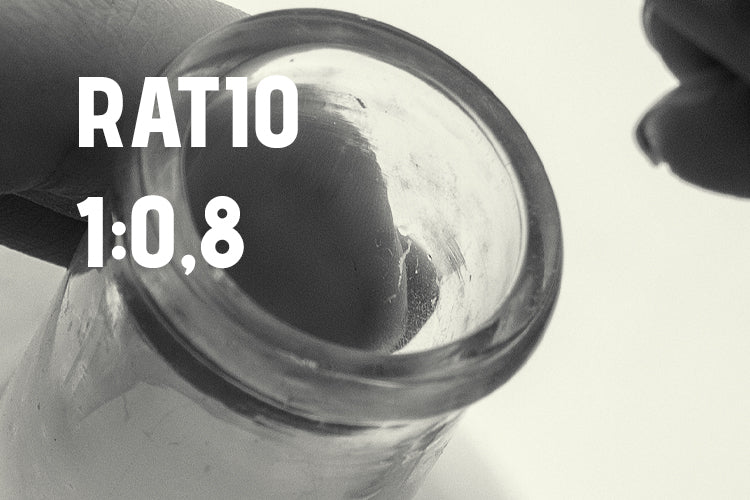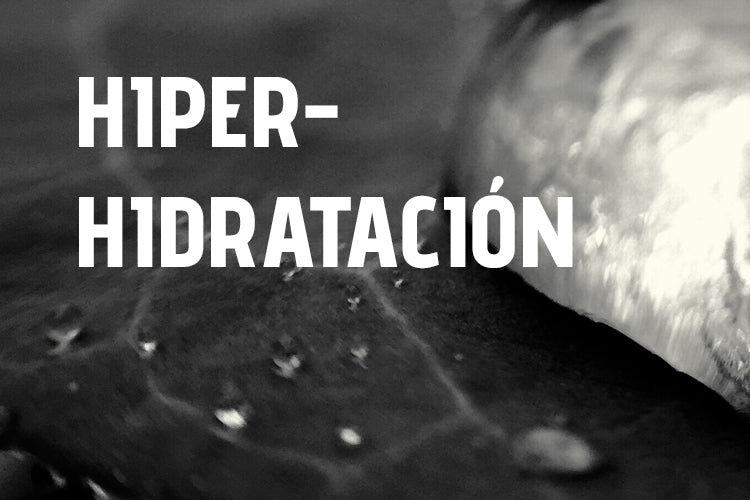It was first suggested in the 1920s that carbohydrate intake during exercise could lead to improved endurance performance (2 , 3). Today, it is well known that carbohydrate intake is key to improving athletic performance. However, how can we assimilate a high amount of carbohydrates during a competition ? Today, our sports nutritionists tell us more about carbohydrate assimilation during exercise, as well as the 2:1 and 1:0.8 ratios.
How many carbohydrates do you need to consume when exercising?
To answer this question, we must not only consider the intensity, duration, and frequency of the exercise , but it also depends on the genetics of the person performing the exercise, their carbohydrate needs, and how much their body can tolerate.
The latter is the key to understanding that excessive carbohydrate intake does not guarantee proper athletic performance . Why?
Because it depends on two factors: gastric emptying and the absorption of sugars from the intestine .
Thus, by gastric emptying we mean the time food and liquids remain in the stomach after ingestion . The longer they remain there, the longer it takes for nutrients to travel to the intestine. This gastric emptying time is determined by the composition of the ingested sugars.
Regarding the absorption of sugars by the intestines , we must be aware that there are different types of sugar transporters in our intestines. Thus, absorption is limited because there are a limited number of transporters, and they are different for each type of sugar.
So, how many carbohydrates can my body assimilate during exercise?
For some time, it was thought that exogenous carbohydrate oxidation rates would not exceed 1 g min- 1 (60 grams/hour) , even at high rates of ingestion (>2 g min- 1 ) (120 grams/hour) (4)(1)
However, recent research has shown that exogenous carbohydrate oxidation can increase above 1 g min- 1 (60 grams/hour) when multiple transportable carbohydrates are ingested. In the first of a series of studies, Jentjens et al. (5) examined exogenous carbohydrate oxidation during 120 min of cycling exercise at 50% of maximal power (Wmax).
Subjects received either 1.2 g min -1 glucose, 1.8 g min -1 glucose, or 1.2 g min -1 glucose + 0.6 g min -1 fructose. Using stable and radioisotope methodology, total exogenous carbohydrate oxidation of the glucose-fructose mixture was reported to be up to 1.26 g min- 1 , whereas for both glucose drinks the exogenous carbohydrate oxidation was around 0.80 g min- 1 , i.e., there was much more oxidation with glucose-fructose than with a glucose-only solution.
In later studies, it was observed that when a glucose-fructose drink was ingested in a 1:1 ratio at very high rates (2.4 g min− 1 = 145 grams/hour) for 150 min of exercise at 50% Wmax, the maximal exogenous carbohydrate oxidation rate could even amount to 1.75 g min −1 105 grams/hour (6) .
This finding of increased exogenous carbohydrate oxidation has also been reported when glucose is replaced by maltodextrin (7), and has also been seen during exercise in the heat (8) , where exogenous carbohydrate oxidation is typically suppressed (9).
As recently reviewed (9) , it was thought that the rate limitation of exogenous carbohydrate oxidation to 1 g min- 1 (60 grams/hour) was not in gastric emptying or muscle glucose uptake. Rather, it appeared to be intestinal carbohydrate absorption that limited exogenous carbohydrate oxidation (10) . Glucose is absorbed from the intestine by the sodium-dependent glucose transporter SGLT1 (11) . It has been suggested that the SGLT1 transporter becomes saturated at high rates of glucose ingestion.
When glucose and fructose are combined , intestinal carbohydrate absorption may be increased , because fructose uses a different transporter, whereas fructose is absorbed by the intestinal transporter GLUT 5 (12) . This mechanism has been used as a way to explain the robust finding of increased oxidation of exogenous carbohydrates with multiple transportable carbohydrates.
Ratio 2:1, efficient carbohydrate assimilation
The "2:1 ratio" refers to the ideal ratio of carbohydrates to glucose and fructose. This approach has been shown to be effective in improving carbohydrate assimilation during exercise. By consuming a mixture of glucose and fructose in a 2:1 ratio, carbohydrate absorption in the small intestine is optimized, which in turn increases energy availability for working muscles.
The importance of this ratio lies in its ability to provide a quick and sustainable source of energy . Athletes can maintain stable blood glucose levels and avoid the energy fatigue they may experience when consuming only glucose.
Ratio 1:0.8
On the other hand, the “ 1:0.8 ratio ” refers to the proportion of carbohydrates in relation to maltodextrin and fructose. Although it may be less known than the 2:1 ratio, this ratio is the most scientifically advanced, and has the highest oxidation rate compared to the 2:1 ratio, as well as glucose or fast carbohydrate supplementation. Maltodextrin is a form of carbohydrate that breaks down into glucose in the body, providing a constant supply of energy. Combining maltodextrin with fructose in a 1:0.8 ratio can be an effective strategy to maintain your energy throughout your workout.
Which is better? The one that best suits your needs
The choice between the 2:1 ratio and the 1:0.8 ratio ultimately depends on the personal preferences and needs of the athlete .
Some athletes may find that the 2:1 ratio provides faster energy and helps them with high-intensity activities, such as sprinting. Meanwhile, others may prefer the 1:0.8 ratio for longer endurance activities, such as long-distance cycling or trail running.
Let's talk about performance
Knowing that we need two types of carbohydrates in the compositions of gels or single doses (maltodextrin: fructose), now, is performance affected in any way by consuming a gel like GLUT 5 when we do sports compared to a gel with a single type of carbohydrate (glucose) or carbohydrates like cyclodextrin, maltodextrin or a mixture of the latter two?

The mean power output during the time trial was 231 ± 9 W for the control (no carbohydrate), 254 ± 8 W for (glucose only) and 275 ± 10 W for GF (maltodextrin : fructose).
A group of cyclists obtained an average power output between 25 and 50% of the target work during the time trial where it was significantly higher in the glucose + fructose (GF) group than the glucose and water groups, since it was between 50 and 75% and between 75 and 100%. The ingestion of glucose + fructose maintains power for longer and without large drops (13) . On the other hand, with glucose, less power was generated each time more time passed. This shows that the consumption of the GLUT 5 range is the most efficient on the market.
What should the ratio be? Maltodextrin:Fructose 1:0.8
Overall, there are 14 studies containing estimates of 2.5- to 3.0-h endurance performance in men, primarily cycling. Relative to glucose/maltodextrin, ingestion of fructose:glucose/maltodextrin:fructose beverages with a ratio of 1–0.5 (2:1 ratio) or 1:0 (2:0 ratio, maltodextrin only) at 1.3–2.4 g (from 60–135 grams/hour) carbohydrate min −1 produced small to moderate improvements in mean power. When compounds with a ratio of 2:1 (maltodextrin:fructose, respectively) were ingested at ≥1.7 g min− 1 (100 grams/hour), improvements were greater (4–9%; than with maltodextrin only). (13)
Effect sizes at higher ingestion rates were associated with a higher rate of exogenous carbohydrate oxidation, unilateral fluid absorption, and less gastrointestinal discomfort, relative to the individual consuming only one type of carbohydrate. Solutions containing a maltodextrin:fructose ratio of 1:0.7-1 (maltodextrin:fructose, respectively) were absorbed fastest when ingested at 1.5–1.8 g min −1 (90–120 grams/hour), glucose:fructose ratios of 1:0.8 conveyed the greatest exogenous carbohydrate energy and endurance power compared with lower or higher glucose:fructose ratios (ratios 2:0, 2:1, or 3:0) (14)
The oxidation rates of a mixture of maltodextrin and fructose in a 1:0.8 ratio are approximately 50% (0.16 g/min) higher compared to glucose/maltodextrin/cyclodextrin/glucose syrup alone (0.08 g/min) and water (0.06 g/min) (15 , 16)
Other studies (17) , They claim that high-intensity endurance performance improves with a maltodextrin:fructose beverage with a 0.8 (fructose) ratio. It is characterized by greater efficiency of exogenous CHO oxidation and reduced endogenous CHO oxidation (which would lead to reduced muscle glycogen expenditure and therefore a greater ability to sustain effort for longer).
Therefore, a 2:1 ratio is equally accepted by the scientific literature, but new advances in carbohydrate oxidation, gastric emptying, saturation and metabolism, indicate that a 1:0.7-1 ratio has the best oxidation rates, fewer gastrointestinal problems and better performance than the other ratios (14).
At FANTÉ , we have chosen to create our GLUT 5 RANGE with a 1:0.8 ratio (maltodextrin: fructose) with the minimum amount of carbohydrates per hour that an athlete needs, 60 grams of carbohydrates per gel.

Would a high carbohydrate intake lead to better post-workout recovery? 120 grams per hour
Muscle glycogen is stored in different locations (subsarcolemmal, intermyofibrillar and intramyofibrillar) (if you want to know more we leave you our glycogen guides ) around the muscle cell and represents not only an energy reserve but also a metabolic, cell signaling and muscle function regulator ( 17 , 18) . Intramyofibrillar glycogen plays a key role during repeated contractions by counteracting contractile deficiencies caused by defective Calcium 2+ release from the sarcoplasmic reticulum and impaired excitation-contraction coupling (17) .
Furthermore, recent studies have shown that blockade of glycogenolytic adenosine triphosphate (ATP) activity leads to impaired muscle function, indicating that a minimum glycogen content must be maintained to sustain adequate muscle contractions (19) . Furthermore, glycogen synthesis has been associated with reductions in GLUT 4 content and translocation (21) , as well as with decreased glucose uptake ( 18 , 19 ). In this regard, the link between intramyofibrillar glycogen content and insulin-mediated glucose uptake indicates the importance of maintaining adequate glycogen levels and CHO availability during exercise to improve post-exercise recovery and glycogen replenishment (20) . Furthermore, it is well known that glucose uptake by muscle during exercise is increased through the GLUT4 transporter, which is stimulated by muscle contraction, constituting an insulin-independent pathway.
Literature
- O'Brien, WJ, Stannard, SR, Clarke, JA, & Rowlands, DS (2013). Fructose–maltodextrin ratio governs exogenous and other CHO oxidation and performance. Medicine & Science in Sports & Exercise, 45(9), 1814-1824.
- Asker Jeukendrup, William H. Saris, and Anton J. Wagenmakers. Fat Metabolism During Exercise: A Review, Part I: Fatty Acid Mobilization and Muscle Metabolism. Article published in the journal PubliCE, Volume 0, 1999.
- Levine S, Gordon B, Derick C. Some changes in the chemical components of blood after a marathon race. JAMA . 1924;82:1778-9.
- CURRELL, KEVIN; JEUKENDRUP, ASKER E. Superior Endurance Performance with Ingestion of Multiple Transportable Carbohydrates. Medicine & Science in Sports & Exercise: February 2008 – Volume 40 – Issue 2 – p 275-281)
- Roy LPG Jentjens, Luke Moseley, Rosemary H. Waring, Leslie K. Harding, and Asker E. Jeukendrup. Oxidation of combined ingestion of glucose and fructose during exercise. 01 APR 2004
- Jentjens, Roy LPG Jeukendrup, Asker E.. High rates of exogenous carbohydrate oxidation from a mixture of glucose and fructose ingested during prolonged cycling exercise. April 2005, Volume 93(4)
- WALLIS, GARETH A.; ROWLANDS, DAVID S.; SHAW, CHRISTOPHER; JENTJENS, ROY LPG; JEUKENDRUP, ASKER E. Oxidation of Combined Ingestion of Maltodextrins and Fructose during Exercise. Medicine & Science in Sports & Exercise: March 2005 – Volume 37 – Issue 3 – p 426-432
- Roy LPG Jentjens, Katie Underwood, Juul Achten, Kevin Currell, Christopher H. Mann, and Asker E. Jeukendrup. Exogenous carbohydrate oxidation rates are elevated after combined ingestion of glucose and fructose during exercise in the heat. 01 MAR 2006
- Roy LPG Jentjens, Anton JM Wagenmakers, and Asker E. Jeukendrup. Heat stress increases muscle glycogen use but reduces the oxidation of ingested carbohydrates during exercise. 01 APR 2002
- Asker EJeukendrupPhD. Carbohydrate intake during exercise and performance. Volume 20, Issues 7–8, July–August 2004, Pages 669-677
- MG Flynn, DL Costill, JA Hawley, WJ Fink, PD Neufer, RA Fielding, MD Sleeper. Influence of selected carbohydrate drinks on cycling performance and glycogen use. Med Sci Sports Exerc 1987 Feb;19(1):37-40..
- RP Ferraris, J Diamond. Regulation of intestinal sugar transport. Physiol Rev 1997 Jan;77(1):257-302. doi: 10.1152/physrev.1997.77.1.257.
- SHI, XIACOAI; SUMMERS, ROBERT W.; SCHEDL, HAROLD P.; FLANAGAN, SHAWN W.; CHANG, RAYTAI; GISOLFI, CARL V. Effects of carbohydrate type and concentration and solution osmolality on water absorption. Effects of carbohydrate type and concentration and solution osmolality on water absorption. Medicine & Science in Sports & Exercise: December 1995 – Volume 27 – Issue 12 – p 1607-1615
- Roy LPG Jentjens And Asker E. Jeukendrup. High rates of exogenous carbohydrate oxidation from a mixture of glucose and fructose ingested during prolonged cycling exercise. Published online by Cambridge University Press: 08 March 2007.
- O'Brien, WJ, Stannard, SR, Clarke, JA, & Rowlands, DS (2013). Fructose–maltodextrin ratio governs exogenous and other CHO oxidation and performance. Medicine & Science in Sports & Exercise, 45(9), 1814
- Ørtenblad,J. Nielsen. Muscle glycogen and cell function. First published: 19 November 2015. https://onlinelibrary.wiley.com/doi/10.1111/sms.12599
- Andrew Philp, Mark Hargreaves, and Keith Baar. More than a store: regulatory roles for glycogen in skeletal muscle adaptation to exercise. JUN 01, 2012.
- S Asp, JR Daugaard, EA Richter. Eccentric exercise decreases glucose transporter GLUT4 protein in human skeletal muscle. First published: 01 February
- P. Kirwan, RC Hickner, KE Yarasheski, WM Kohrt, BV Wiethop, and JO Holloszy. Eccentric exercise induces transient insulin resistance in healthy individuals. JUN 01, 1992.
- Aitor Viribay, Soledad Arribalzaga, Juan Mielgo-Ayuso ORCID, Arkaitz Castañeda-Babarro, Jesús Seco-Calvo ORCID and Aritz Urdampilleta. Effects of 120 g/h of Carbohydrates Intake during a Mountain Marathon on Exercise-Induced Muscle Damage in Elite Runners. Nutrients 2020, 12(5), 1367




Leave a comment
This site is protected by hCaptcha and the hCaptcha Privacy Policy and Terms of Service apply.